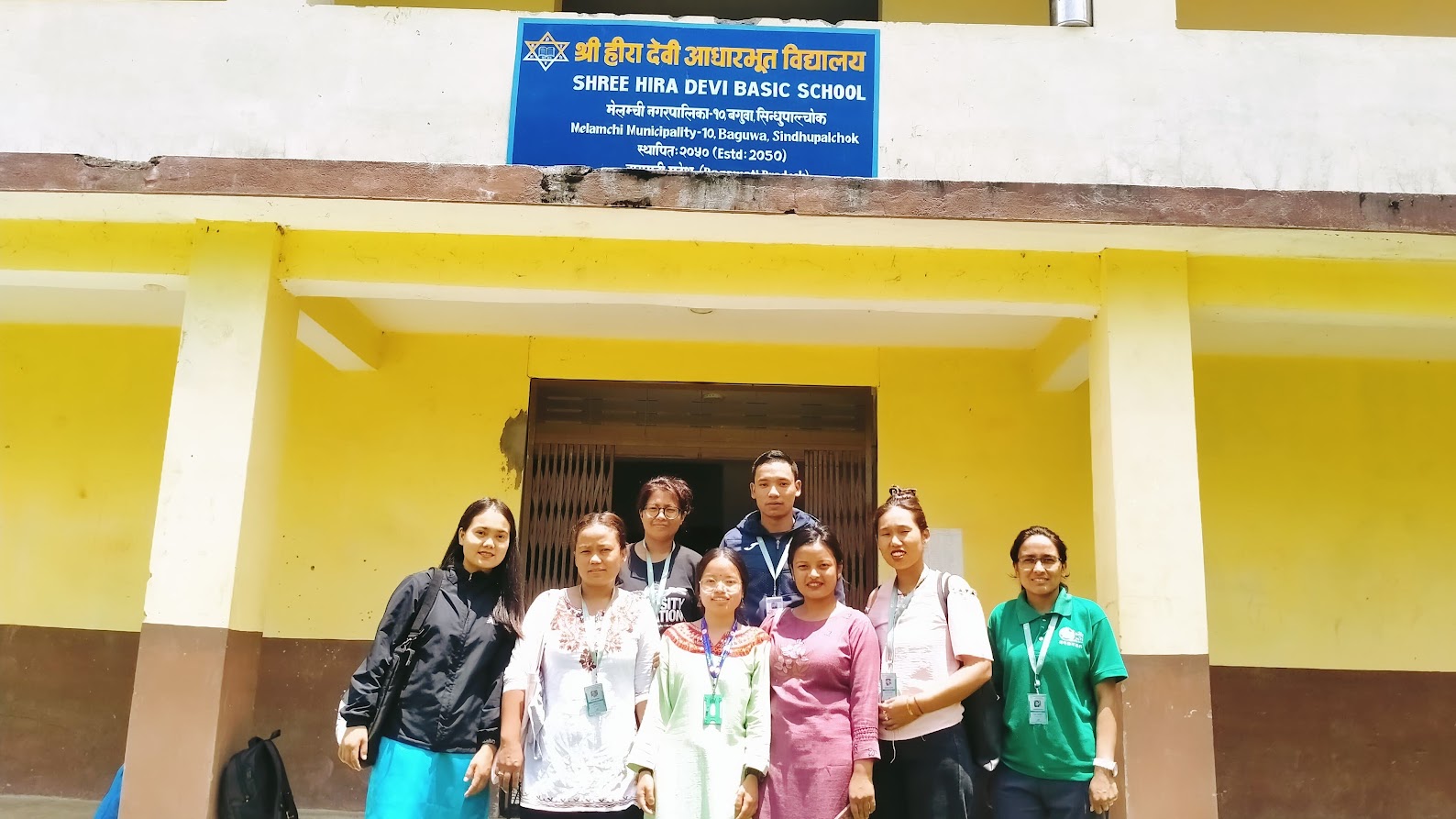
The school offers education from grade one through to grade five, as well as ECD training, with students aged from 2 to 10 years. There are 10 classrooms which are relatively large and are adequately furnished with enough desks and benches and whiteboards.
You will be expected to teach from 9:30 AM to 4 PM with an hour lunch break and each subject period lasts 45 minutes.
NOTE: Following the devastating global crisis in April in Nepal, COVID-19, schools immediately get shut down. This community and students seem to be normal and fortunately, none was affected by the virus.
Subjects taught:
All the textbooks except English are in Nepali and the medium of instruction is also mostly Nepali.
-
Mathematics- arithmetic, algebra and geometry are more significantly divided as you go to higher grades.
-
English- stories, poems, biography and similar texts and grammar.
-
Science- basic ideas like living and nonliving things, plants e.t.c.
-
G.K - General knowledge
-
Nepali- stories, poems, biographies, Nepali grammar and similar texts.
-
Social- society-it’s issues and proposed solutions, geography, history, organization etc.
-
Easy English- Grammar, stories, passage etc.
-
Hamro Serofero - Population and Health, community-based, occupation, surroundings education.
Level of English comprehension:
The level of education of the children is good but not at the required level for the children at their age. The same class may have children of varying ages and abilities, so teaching effectively can be a little challenging. The children begin learning English directly with the alphabet and don't learn phonetics so the children in the smaller classes might find difficulties in understanding volunteers' English.
Most students in grades 4-5 can write simple sentences in good structure but mostly memorized ones and often without understanding the meaning. But the children are very keen to learn which the past volunteers have found to be really encouraging. The greatest contribution volunteers can make is through organizing classes in the form of conversations to encourage them to speak and introducing creative writing like poems (rather than just copying as normally happens) and in the smaller classes to carry out classes in the form of rhymes and active exercises. The children in the school, assisted by their teachers, have done a lot of artistic works, so working with them on that heading can encourage the students more and value their creativity.
Teacher’s level of English: Two of the teachers speak good English and all the teachers can fairly communicate. The teachers like communicating with the volunteers and correcting their English during conversation can be really helpful to build up their confidence in speaking in English.
Exams: Teachers construct questions and exercises from the textbooks. They have simple monthly tests and more important exams every 4 months.
Resources available:
-
All classrooms have whiteboards.
-
A library with a variety of books appropriate for the students in all the classes.
-
Volunteers are recommended to train the teachers to use the computers.
-
Resources for extra- curricular activities: Most of the time the school only has a single set of equipment for simple games like skipping, badminton, etc. so need constant addition. The children enjoy engaging in sports like football, volleyball, etc. Badminton, rings and skipping are popular among the girls.
-
The students enjoy drawing and colouring but most of the time, the school has limited stock of drawing papers and colours and so needs constant addition/replacing.
-
Needed papers for assessment to print and photocopy which school has limited stock of papers and so needs constant addition.
-
All classrooms have whiteboards.
-
How to teach effectively: The school owns a textbook for each school subject. You can copy a list of topics from the textbooks that you feel you would like to teach using the materials you have brought and/or the techniques you have acquired and teach in a preferred way. This will give the local teachers an idea of how to teach the rest of the chapters in the book in an interactive way. You can be an inspiration for the local teachers.
-
The children love doing homework, so keep giving them some creative assignments every day to make sure the students are revising their lessons. Try making the students take advantage of the environment they have. E.g. herbarium, collection of wild fruits and flowers, stones, sticks or branches etc. You can bring stickers that you can paste to the exercise books of students who do the best homework and class work. This really excites the students and adds enthusiasm to the class environment hence inspiring them to learn properly and also to be disciplined.
Things that could make teaching easier for you: Card games for improving vocabulary and teaching sentence structures, teaching aids to help teach pronunciation (as most of the teachers learnt English pronunciation in the wrong way, the children learn it wrong as well. It is a wonderful opportunity for you to make the children’s basic English up to date). Whiteboard markers would also be useful.